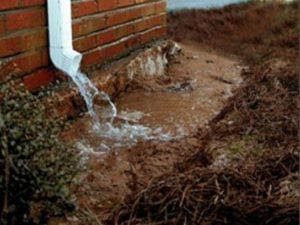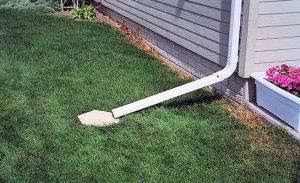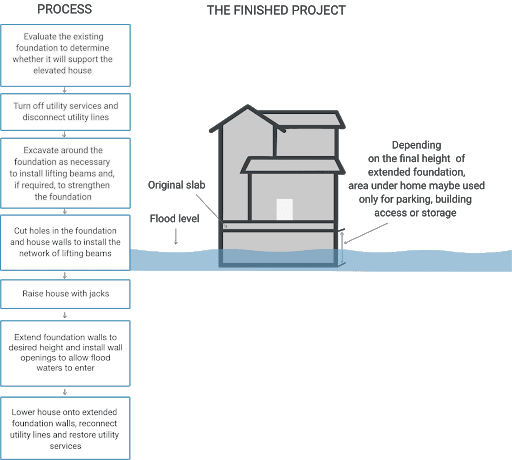There’s a new flood map in town and it is a good one. This one uses modeling to look at future risk to people and properties.
Among the towns and cities where we work, there are flood areas along rivers and wetlands.
We work near the Atlantic coast, but generally not close enough to matter. Storm surge flooding (big waves from the ocean during hurricanes and nor’easters) could affect only a few of our clients, but they are in-the-face of buyer’s agents on the Cape and Islands, and in towns like Hull, Winthrop, and other oceanside locations.
Beside river and ocean flooding, rainwater flooding is a problem that can happen almost anywhere.
Rainfall, flash floods and snow melt
Flood prevention measures for every house.
Storm surge and river flooding zones:
Areas where houses are in the wake of ocean storm surges are built differently. I noticed this in Key West. Basements were not common. The foundations were raised from the ground, with spaces so water can drain through and not get trapped under the foundation.
Having your electric box, boiler or furnace, and utility connections in the basement doesn’t work near the coast. Major flood damage will occur if your basement could get filled with ocean or river water in a flood. No sump pump will save you from that amount of water.
Rainwater flooding areas:
Flash flooding can happen almost anywhere. When there is heavy rain or snow melt, the water needs a place to go. In built-up areas, basements are the lowest point around.
To prevent water in your basement during heavy rains and sudden snow melts, there are two things that help the most.
 Keep your gutters and downspouts working.
Keep your gutters and downspouts working.
First, check your gutters and downspouts. They are taking thousands of gallons of water away from your foundation when there is heavy rain. You need to have the leaves out of the gutters and the downspouts need to point the water well away from your foundation.
Leaves and debris collect in your gutters. The best time to clear them out is after the leaves have fallen and before everything freezes up for the winter. The timing can be tricky, but it is worth doing. If you have trees that hang over your house, do it annually.
 If your downspouts don’t direct water well away from your foundation, change it. It can be fixed by adding a downspout extender. You want to do this! It is a $5-20 repair. If a downspout is direction water right next to the foundation, that water will seep in.
If your downspouts don’t direct water well away from your foundation, change it. It can be fixed by adding a downspout extender. You want to do this! It is a $5-20 repair. If a downspout is direction water right next to the foundation, that water will seep in.
How sump pumps work
If you have a finished basement, or you get puddles in your basement, you may need a sump pump.
A hole is dug under the slab of the basement to form a pit. Water collects in the pit, well under the slab (sometimes as much as 3 feet down, sometimes less.) A pump is set in the middle of the pit, with a switch that goes on based on the rising water level (like a toilet float.) When the ground water rises, the water in the pit gets pumped out by a tube to the outside. When it works right, the water is pumped out and the basement floor no longer gets wet.
Most people in the know recommend a perimeter drain. This is like the gutter on your roof. It collect water and directs it into the sump pit.
In addition, a battery back-up and a second pump are a prudent addition.
Home-made sump pump installations frequently have one or more of these problems:
- Many do not have walls in the pit; the pump is put in a muddy hole at the lowest point in the basement. This creates several problems. Mud eventually gets sucked into the pump and the pump will choke to death. If the pump doesn’t die, it keeps sucking the mud under the slab, creating little tunnels under there. In most cases, this won’t matter much, since the slab is not structural. However, if the slab is thin, it’ll start shifting. If the undermining gets to the foundation, the real trouble begins.
- Open sump pump holes allow dampness in the basement, since the water sitting at the bottom of the pit evaporates into the basement. Also, weak covers or no covers make it possible for people and animals to fall in.
- Few have perimeter drains, so other parts of the basement still get wet.
- A sump pump is an appliance working in a wet area. Many are plugged into any old outlet, frequently with a long, dangling extension cord. They don’t have a dedicated outlet. They should.
- Many use flexible hoses as the conduit out of the house. These do not have a check valve, so water can accumulate in the hose, where it is sagging. Another no-no. It wastes energy and can lead to mold issues with the standing water.
- Some have drain hoses that are flexible. These can get frozen or clogged and cause the pump to fail.
- Some have hoses or pipes that drain onto the sidewalk. During weather like we are having now, these will cause the sidewalk to ice over at night.
- Worst of all are the home-made sump pumps that drain into a sink or directly into the sewer line. These are illegal. (If everyone’s sump pump drained into the sewer system, the system will get flooded.)


Leave A Comment